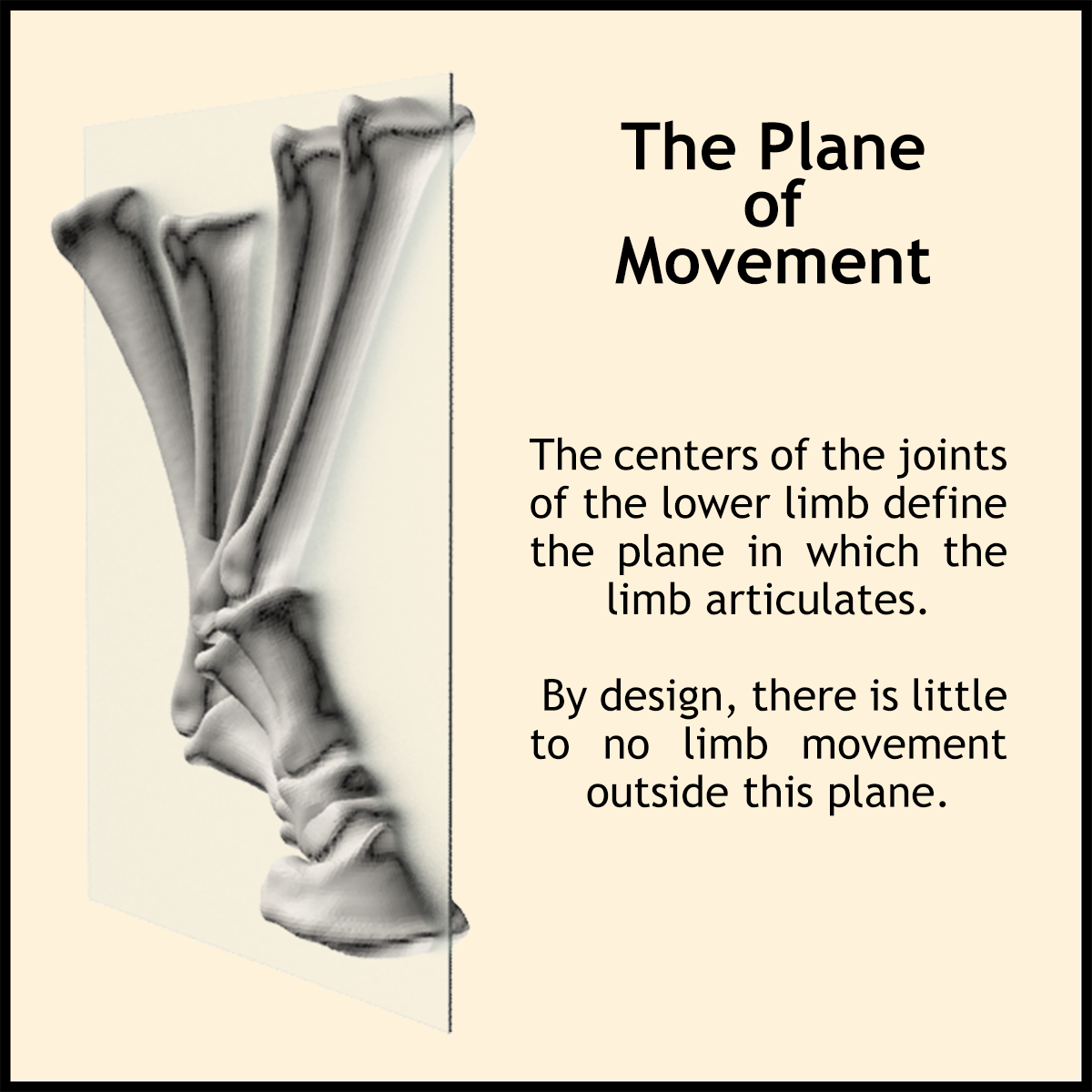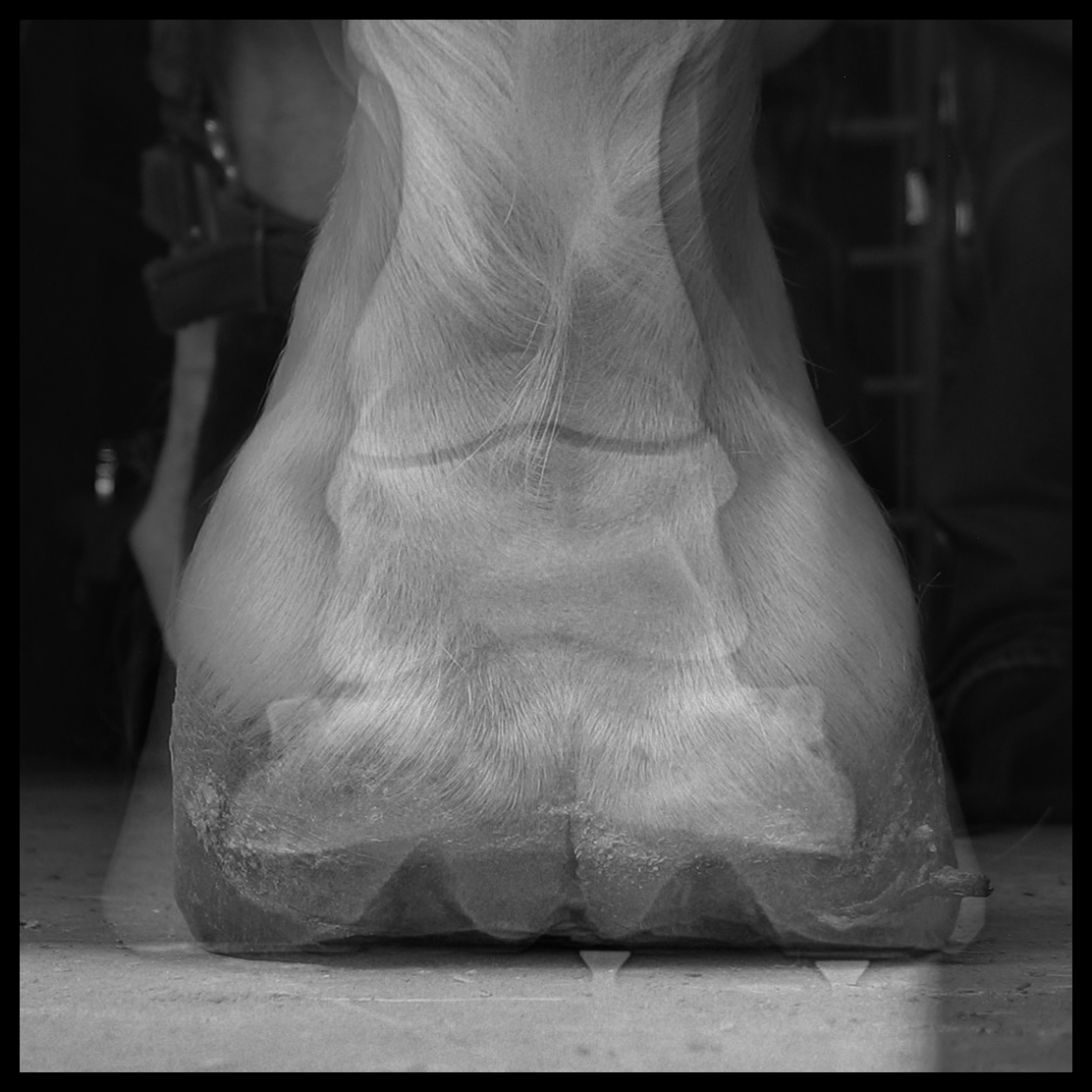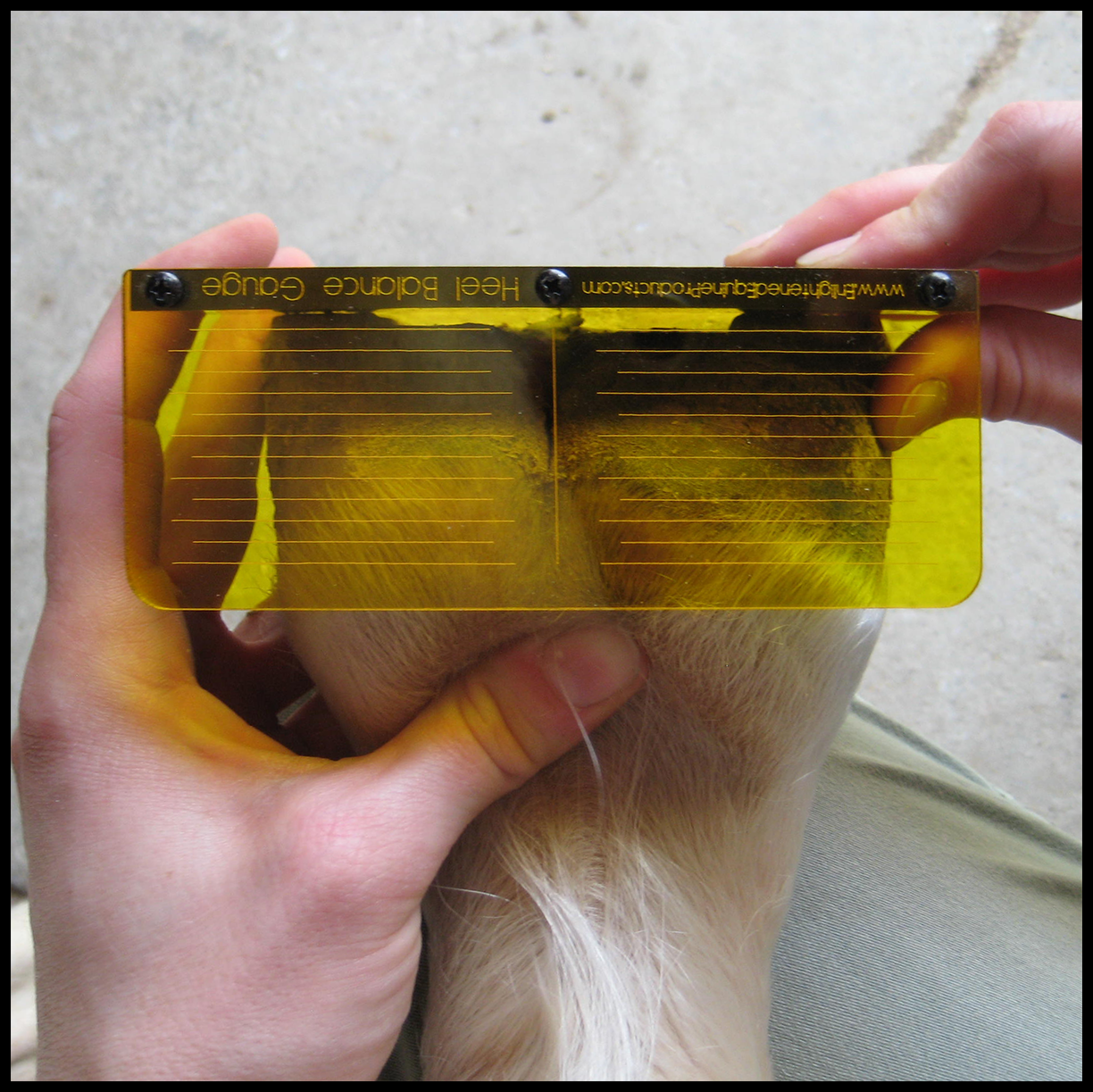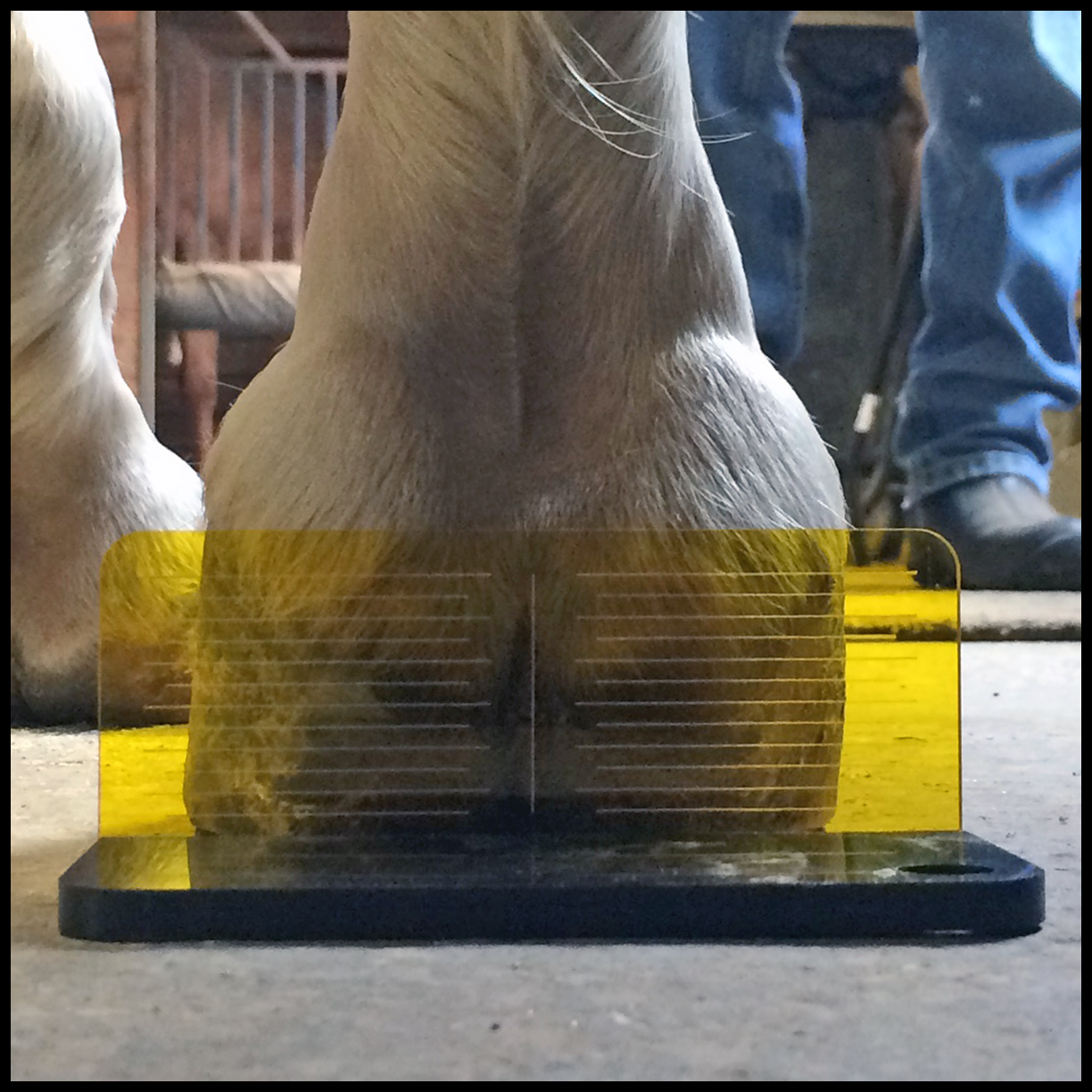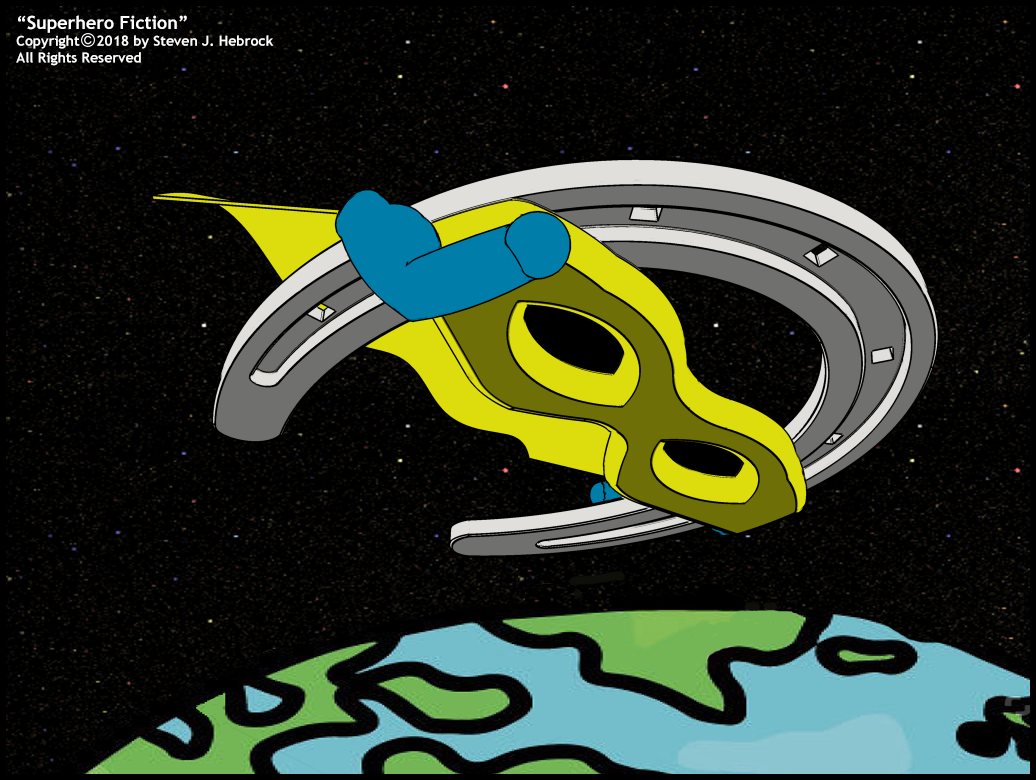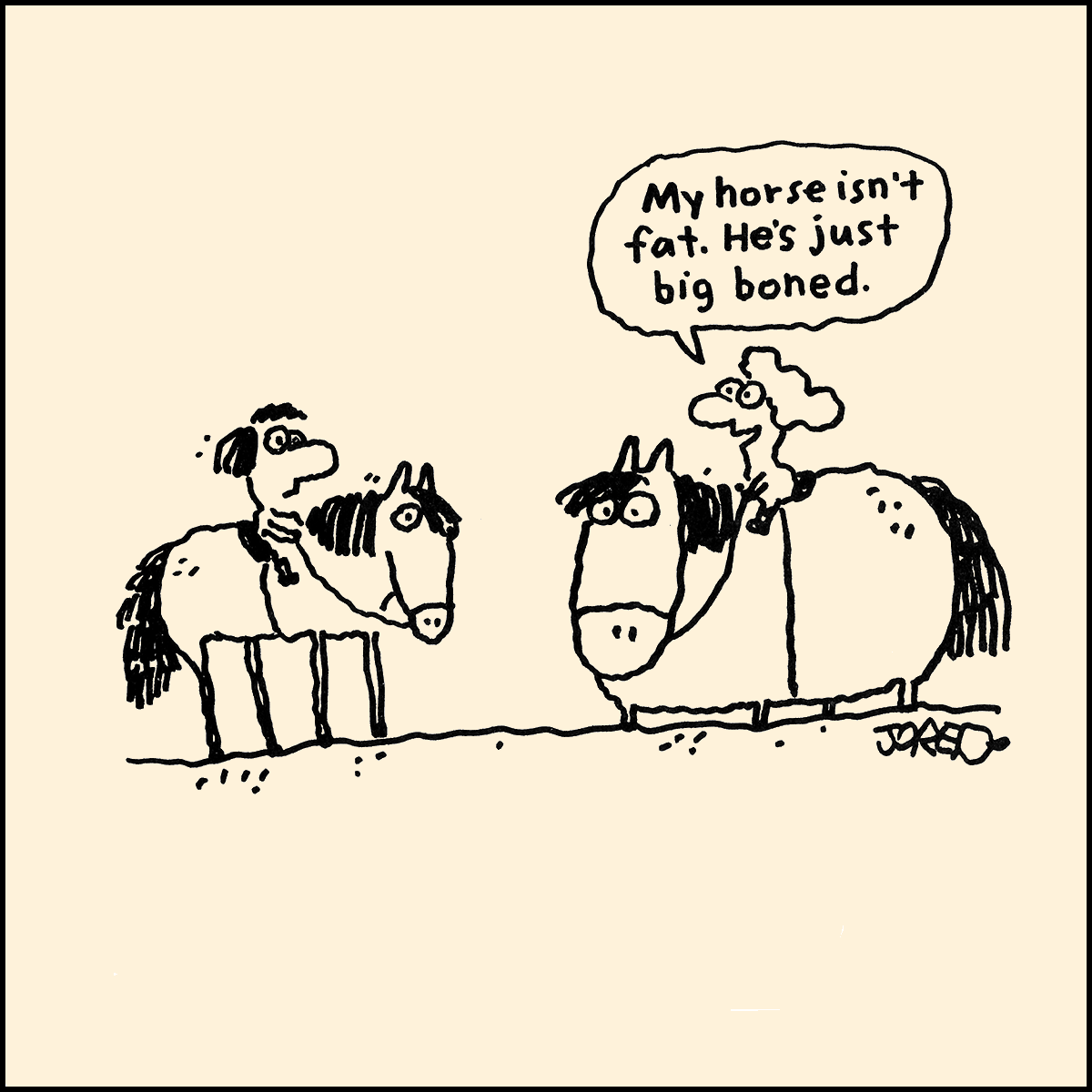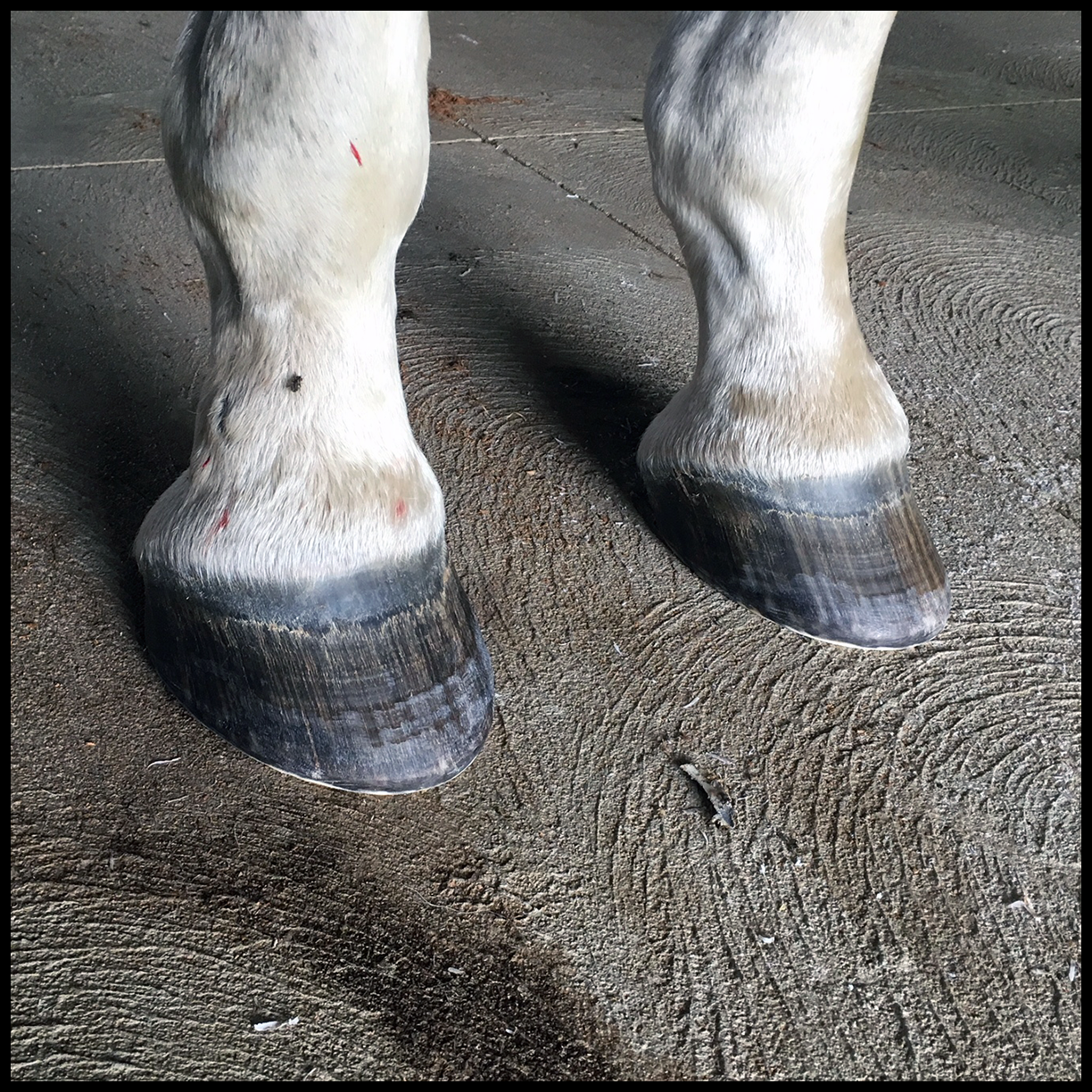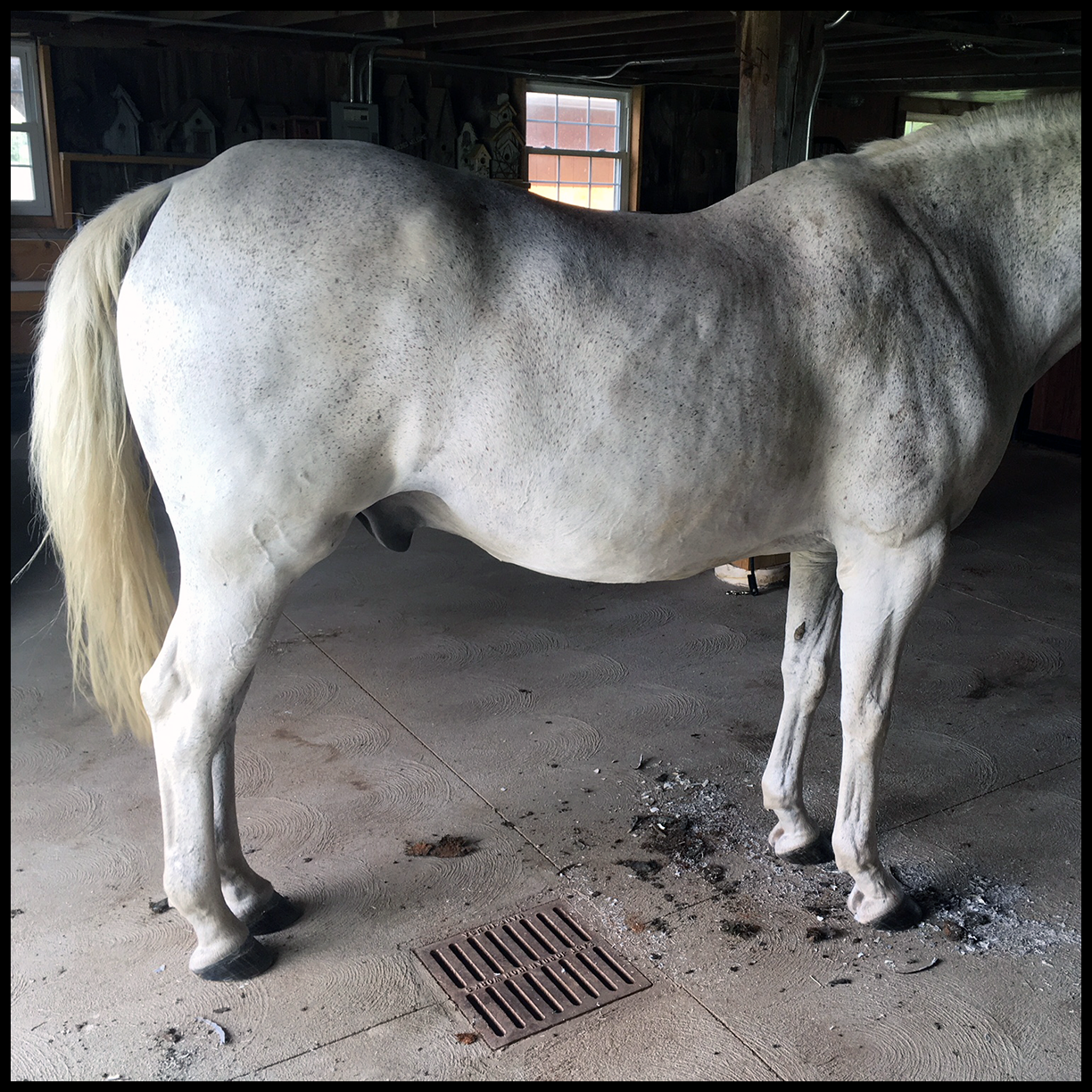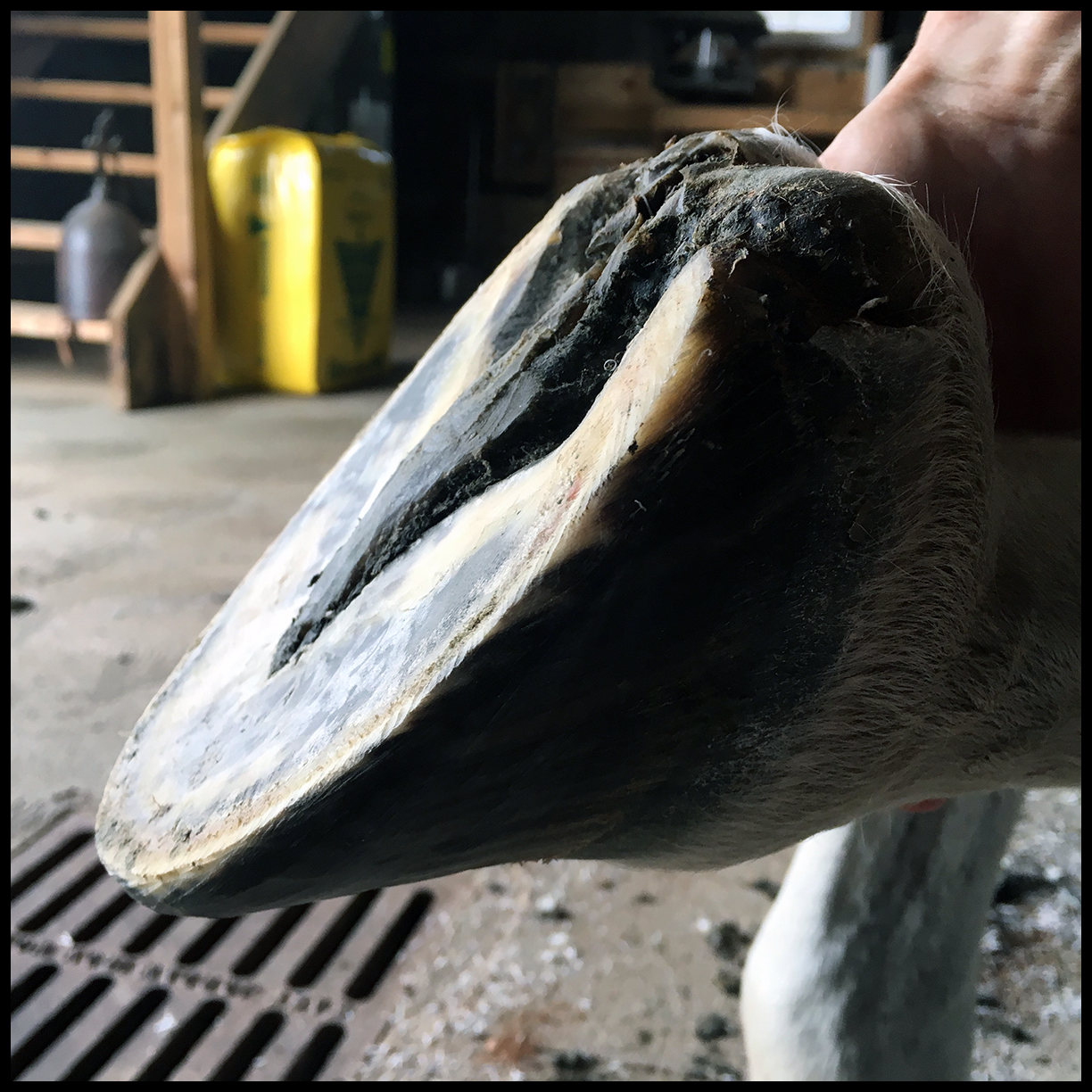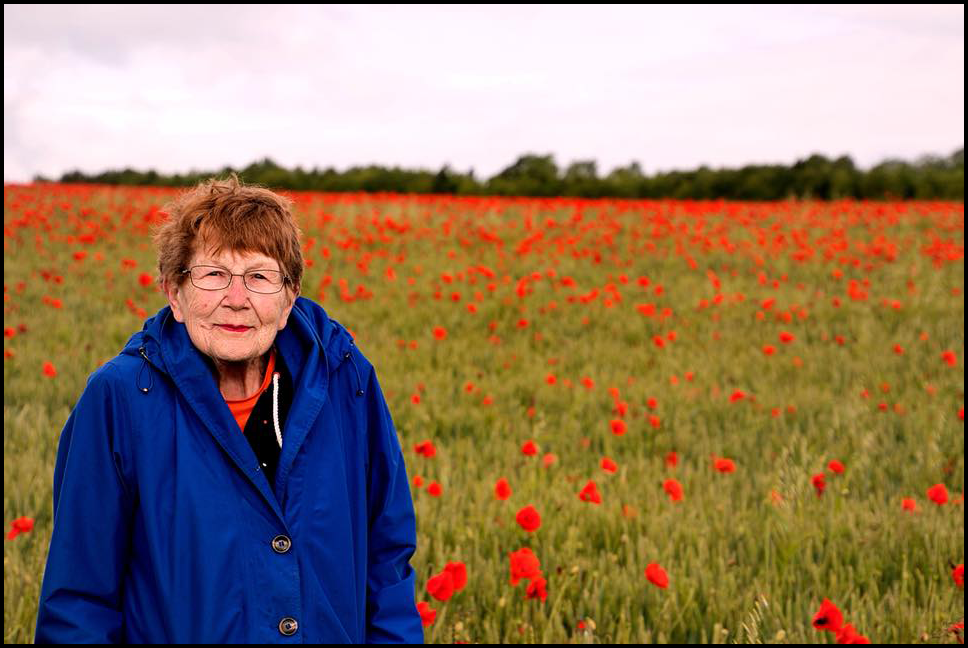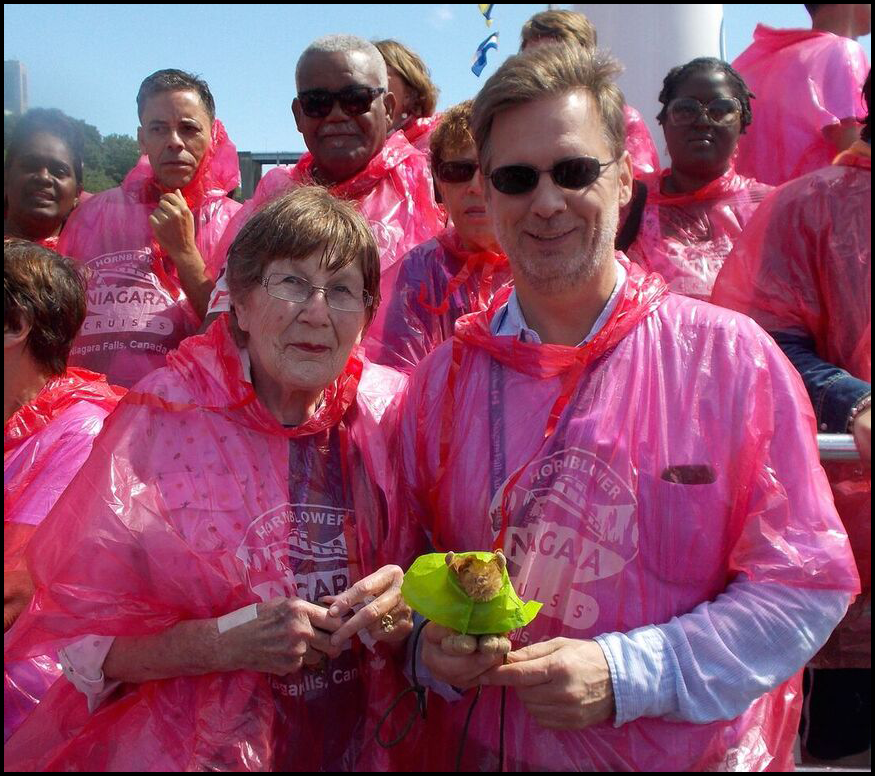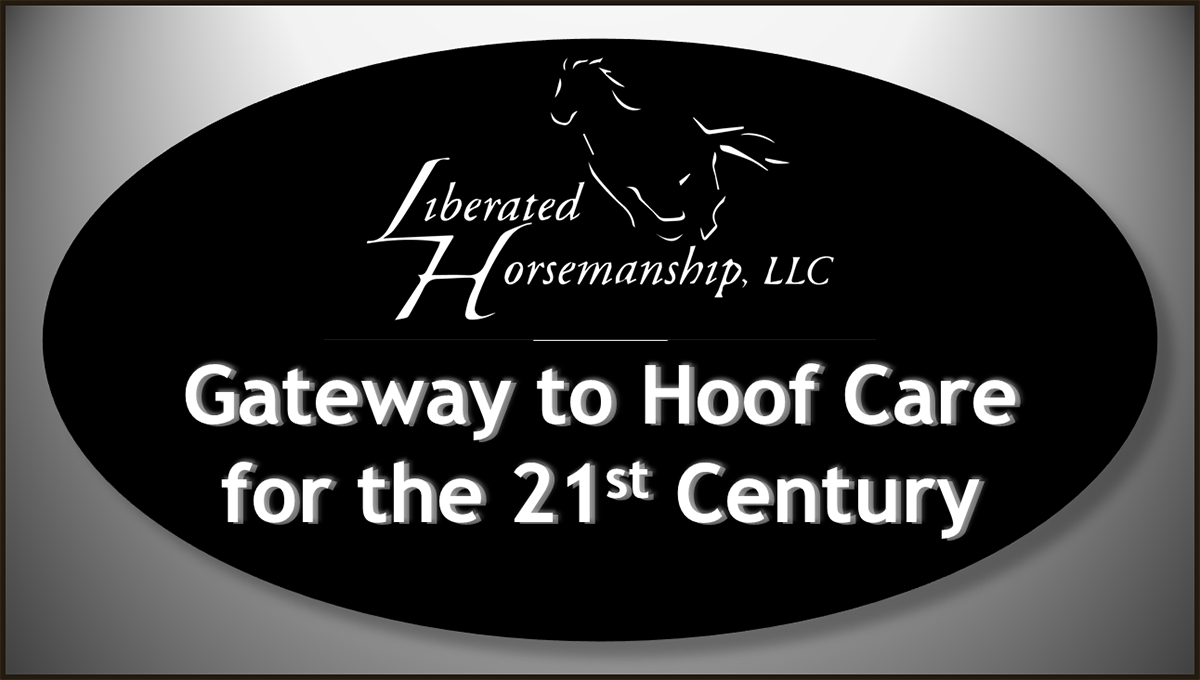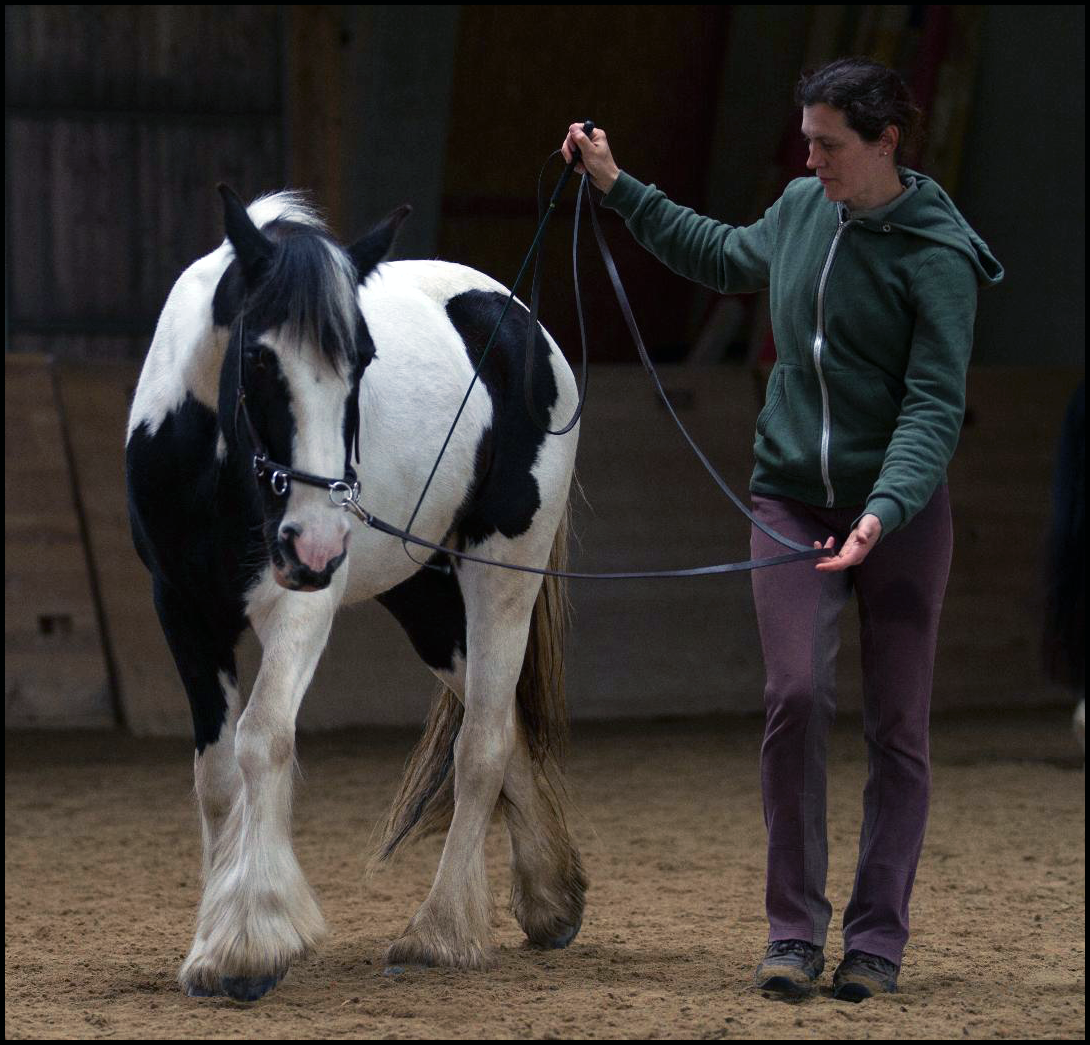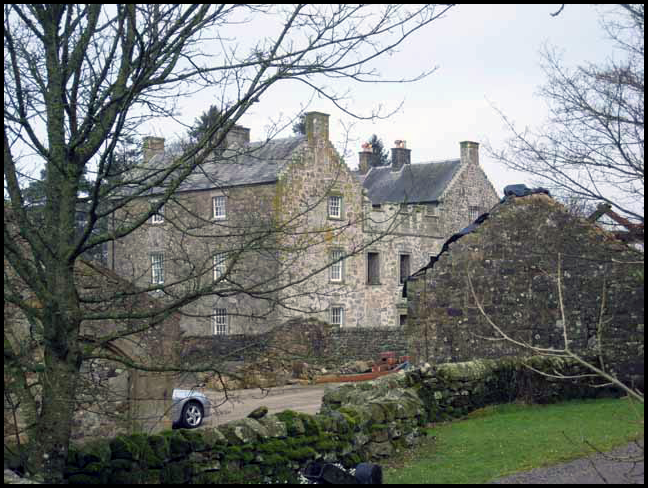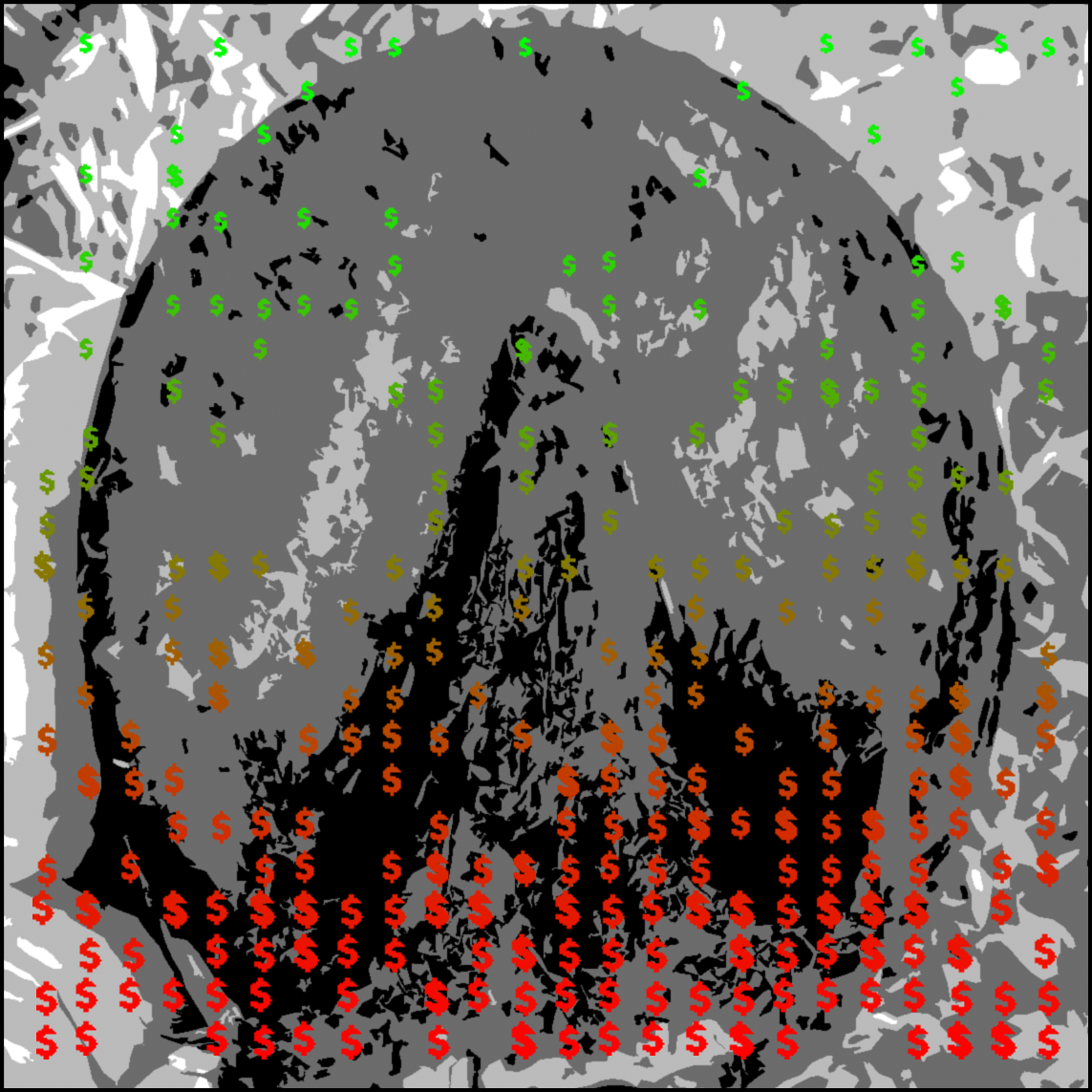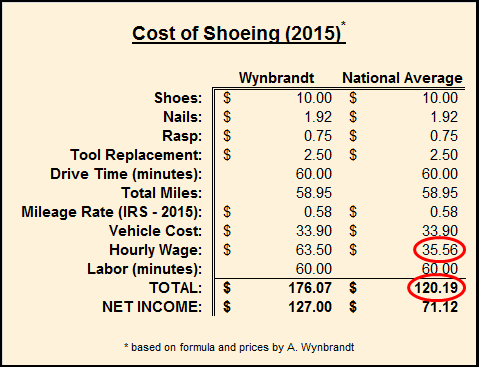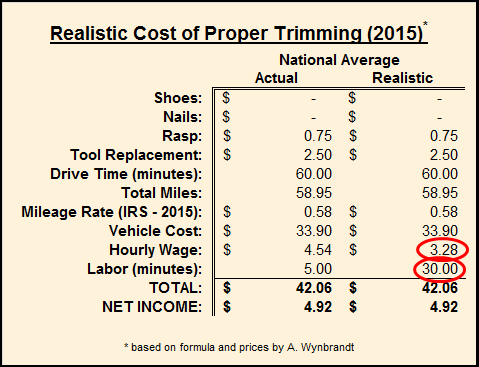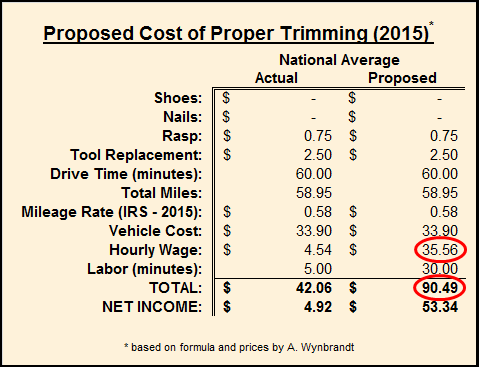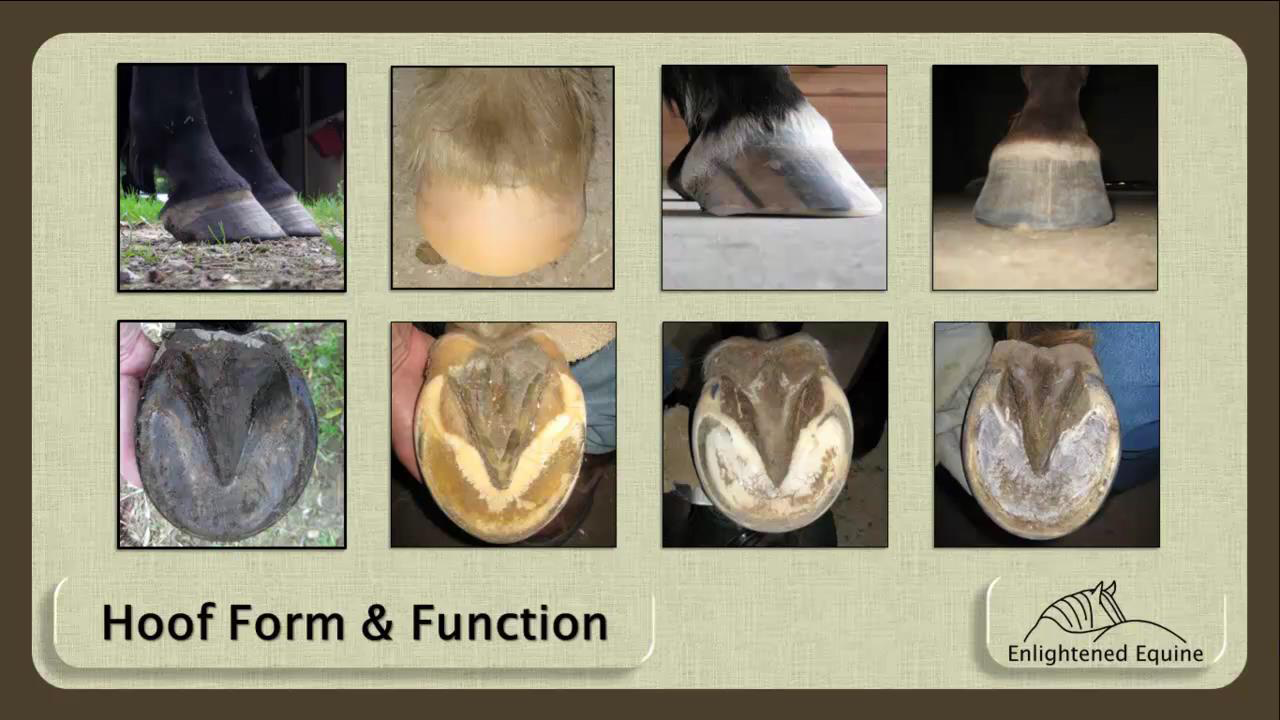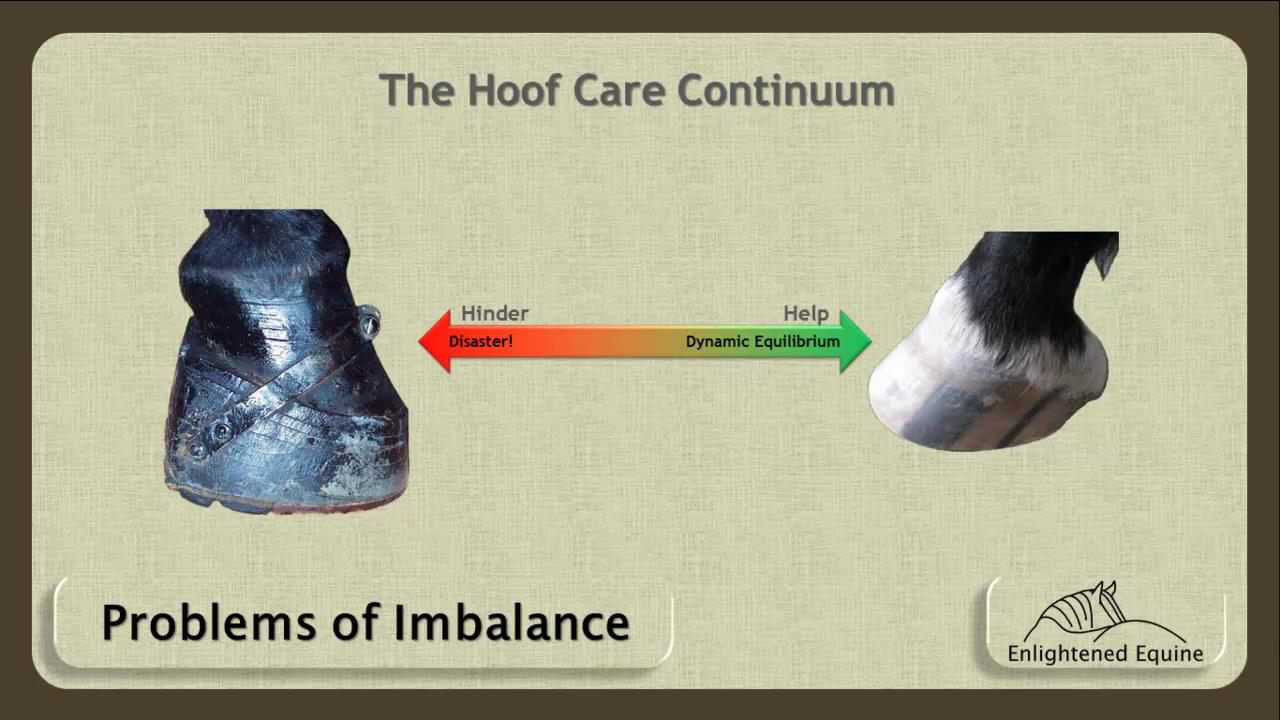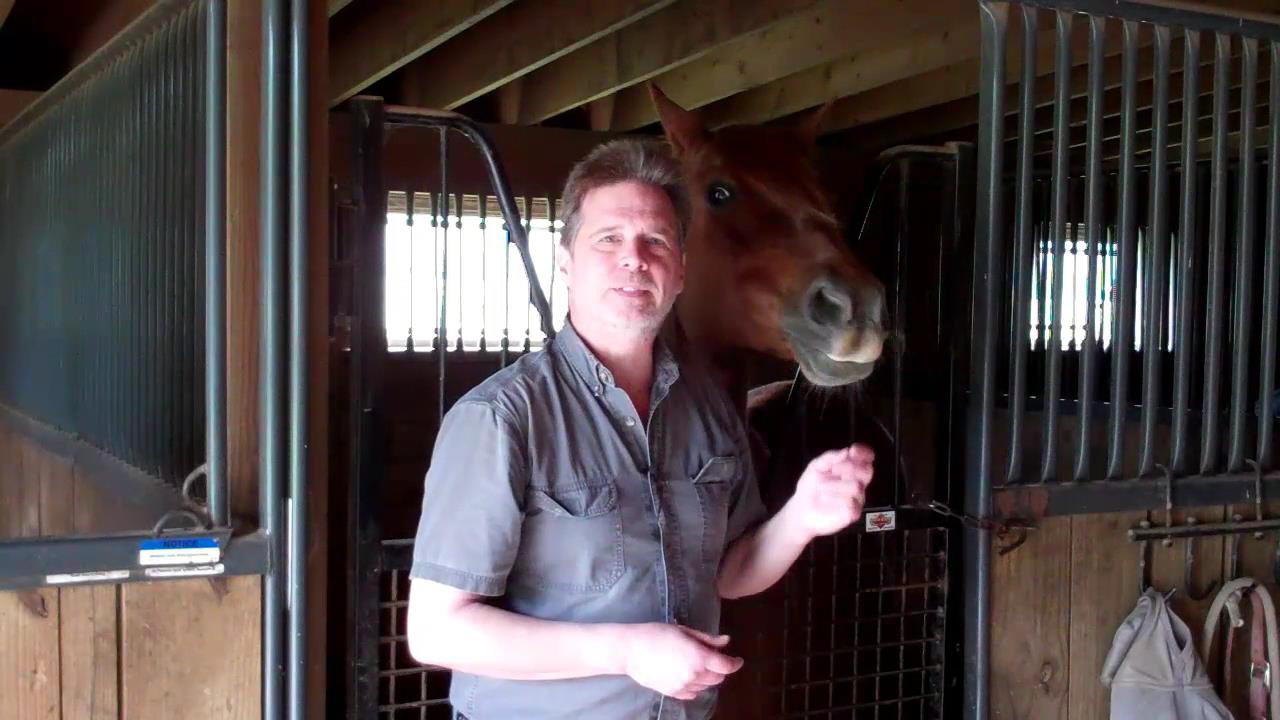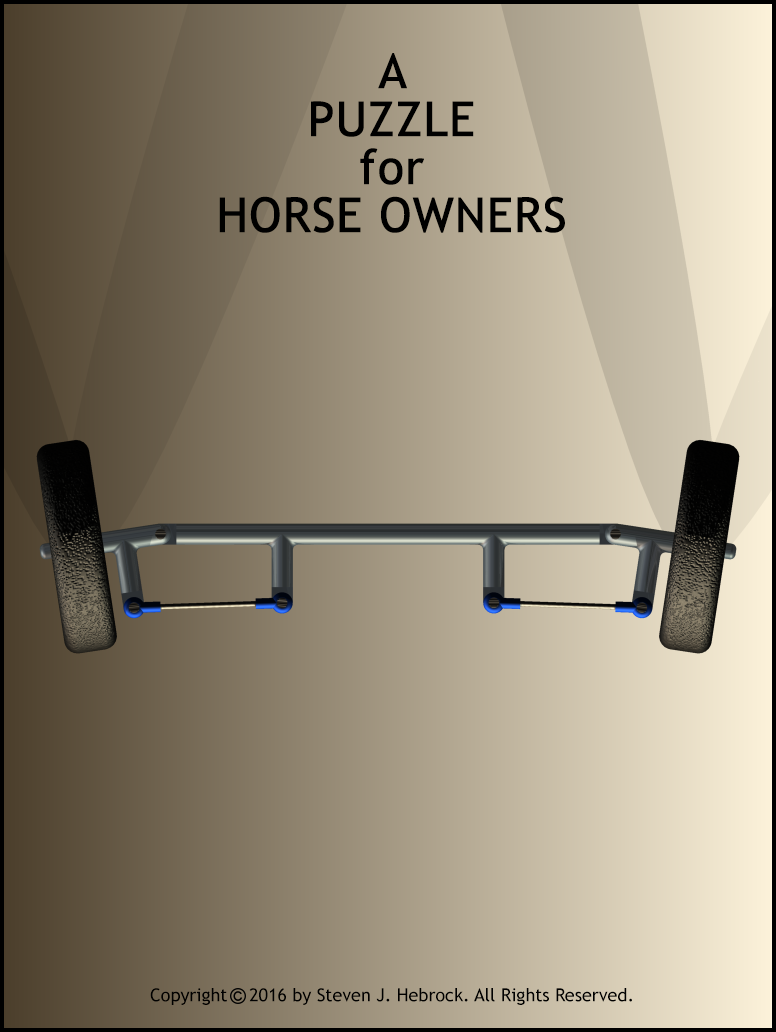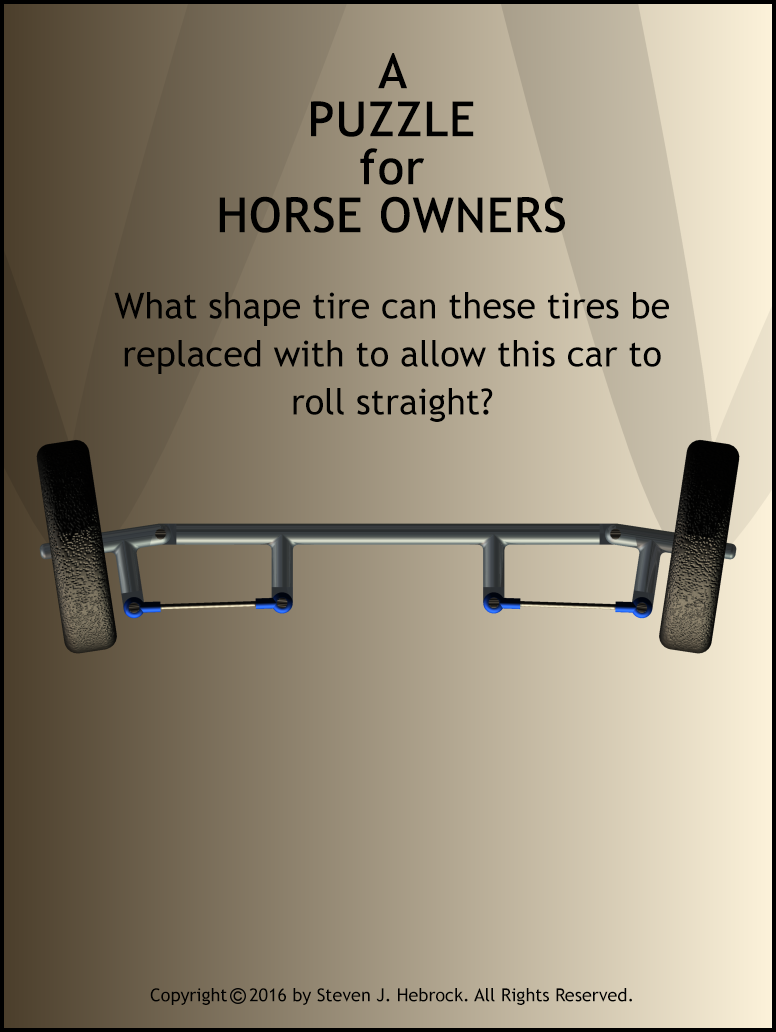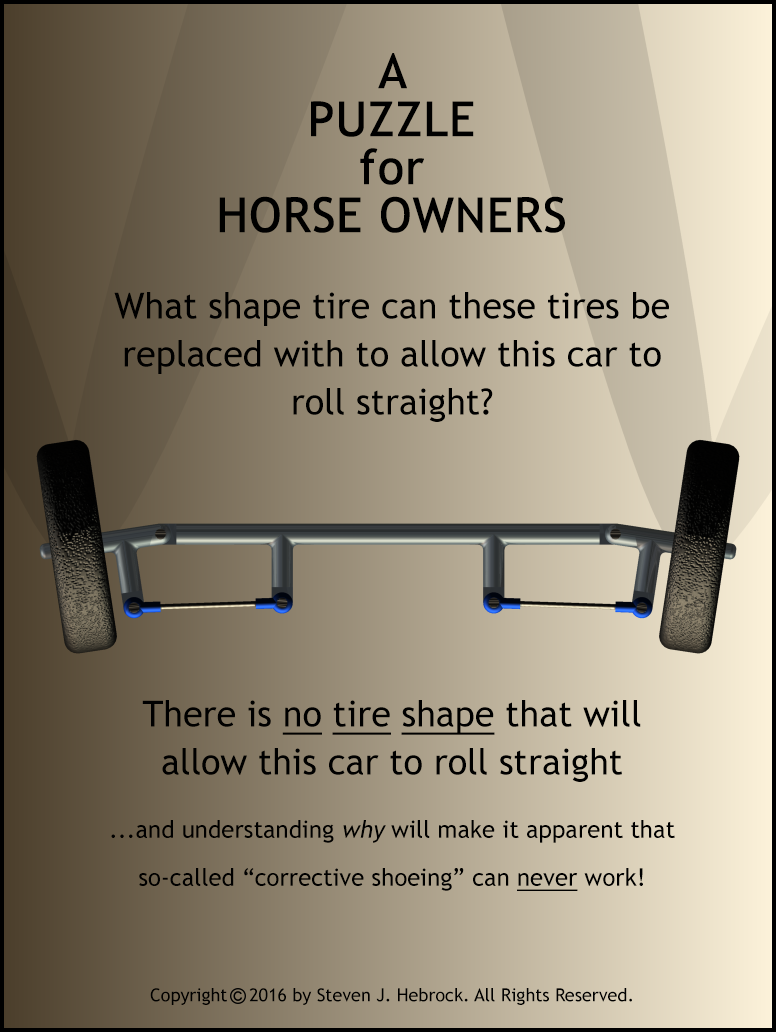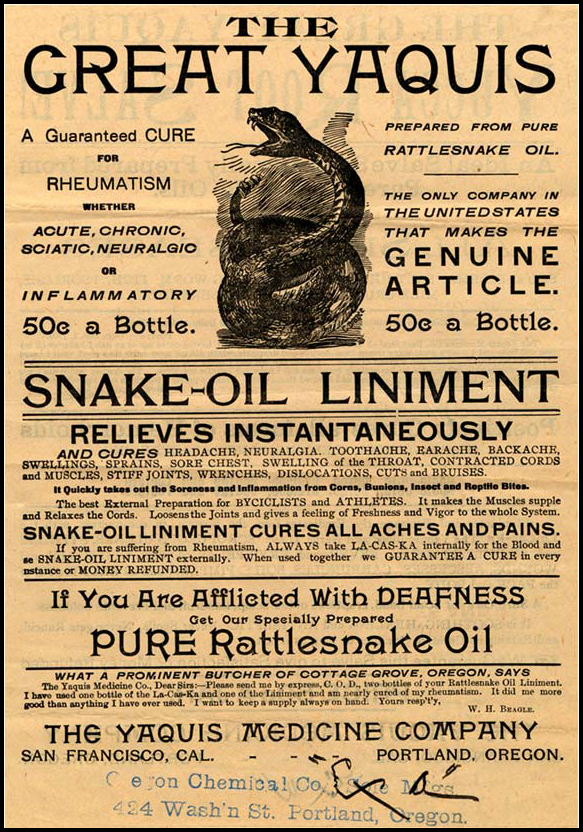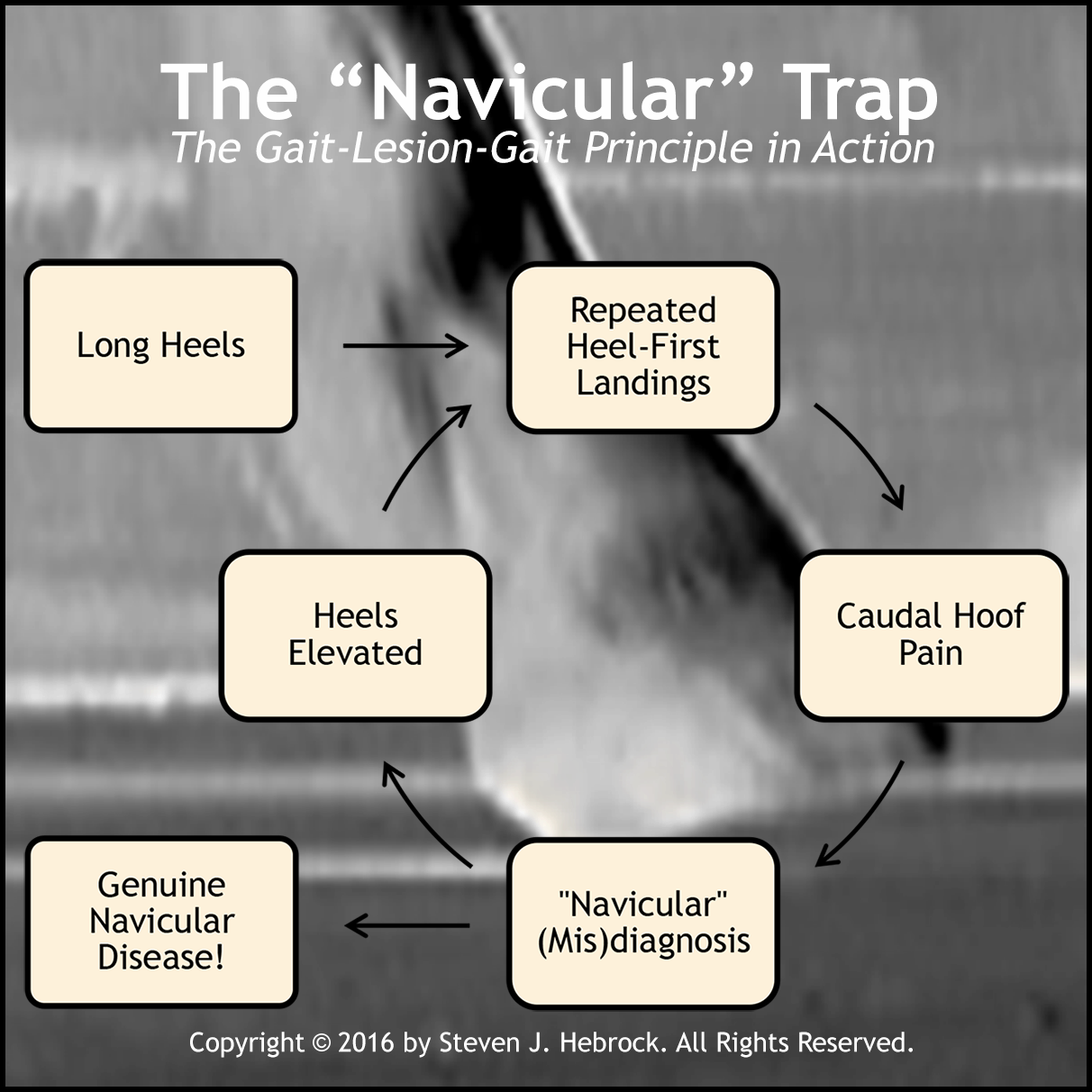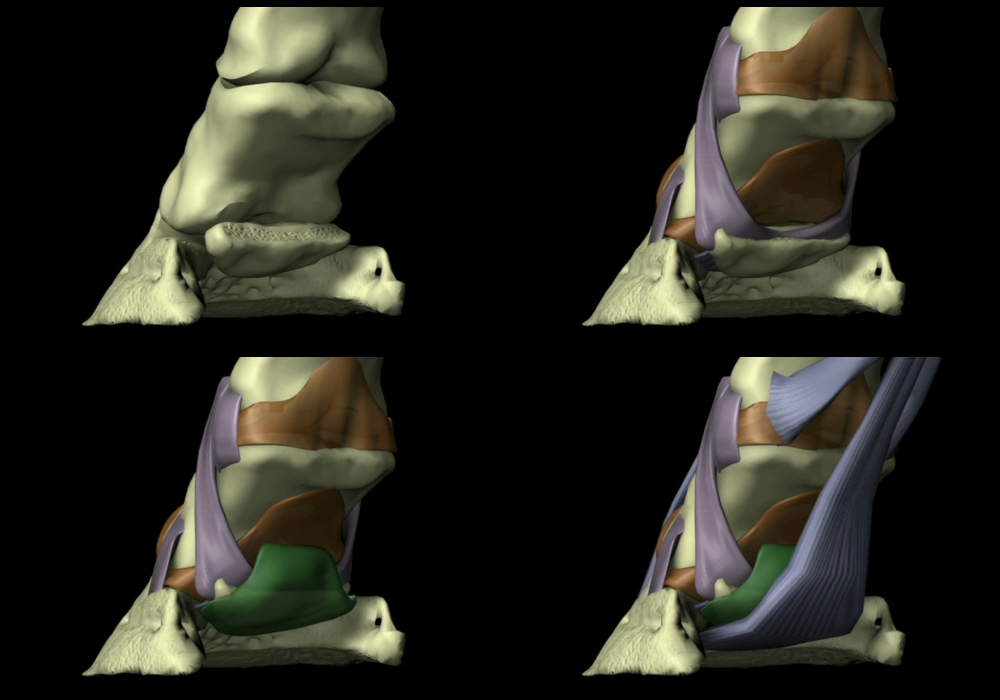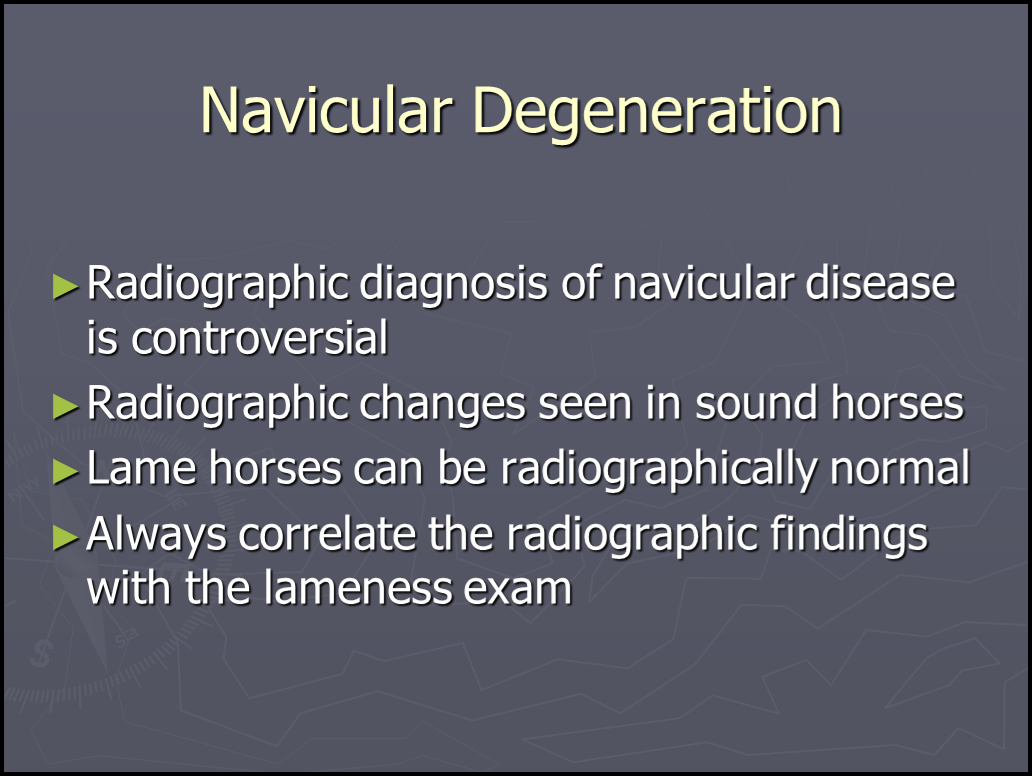(Note: This is a much-expanded version of an article originally written for the 2018 edition of the Ohio Equestrian Directory.)
When a knowledgeable hoof care provider talks about a horse’s hoof being “in balance,” he or she is referring to a hoof making contact with the ground without rocking or twisting in either the side-to-side (medial-lateral, or M-L) or front-to-back (anterior-posterior, or A-P) direction as it comes under load. Why is this an issue? Because any horse that experiences significant movement on surfaces such as hard ground or pavement – particularly at speeds faster than a walk – will eventually suffer from health issues directly related to the extent of imbalance of their hooves. I’ve devoted quite a lot of space to describing the problems related to A-P imbalance in the form of heel- and toe-first landings in The Myth of the Heel-First Landing and Navicular Disease series, so this article will focus on medial-lateral imbalance and its consequences.
Understanding the basic construction of the joints of the horse’s lower limb, and how it differs from our own, is key to grasping why medial-lateral imbalances are so damaging to the horse. Try a little experiment: Stand up straight, and put most of your weight in one of your feet. Now, while keeping your opposite foot flat on the ground, but not shifting your weight onto it, try rotating that foot so the toes point first towards the 10 o’clock and then the 1 o’clock positions on the face of an imaginary clock on the ground under your foot with 12 o’clock being straight ahead. Not much of a challenge, right? Now try the same thing with your hand flat against a wall and your arm parallel to the floor. Again – pretty easy! That’s because in humans, the distal (farther away from our body) parts of our limbs i.e. the forearm and lower leg are constructed to allow that particular type of rotatory motion via the radius/ulna (forearm) and tibia/fibula (lower leg) bone combinations; in essence, their arrangement permits one bone to “spool” over the other.
If you then take a trip to the barn, pick up a foot, and attempt to either rotate the foot or tilt the foot from left to right, you’ll quickly discover that neither is really possible. A glance at the bones of the horse’s lower limb reveals why: Unlike our own wrists and ankles, all of the joints below the shoulders and hips of the horse are designed to allow for movement only in the plane defined by the centers of the unloaded and loaded fetlock joint and the center of the coffin joint (the center of the carpus and tarsus i.e. “knee” and hock also lie on this plane), as shown below –
Thus, there is practically no side-to-side variation in how the horse presents his hoof to the ground; on any given surface, the hoof will always make ground contact in essentially the same way. This is very important to the health of the horse’s lower limb. As you can see in the above illustration, if the hoof were to make uneven medial-lateral ground contact, there would be considerable stress on the joints of the lower limb with every step, because they cannot articulate in a side-to-side direction.
Unfortunately, deliberately unbalancing the hoof is extremely commonplace, often advocated by veterinarians and hoof care providers in a well-meaning but misguided attempt to “correct” a limb whose foot points in a direction other than perfectly in line with the horse’s body. These methods leave one “side” of the hoof wall long with respect to the other side to twist the foot as it comes under load, sometimes giving the appearance of a straighter limb when the horse is standing still, as has been attempted by the hoof care provider for the horse in the radiograph at the beginning of this article. Since the “set” of the limbs is determined by the shoulder and hip joints, however, it’s simply not possible to truly correct such a condition through trimming or shoeing; the shoulder or hip cannot actually be changed, and the horse ends up paying a heavy price for the false impression of being “more correct.”
In most of the cases I’ve seen, no actual “straightening” has occurred; the shoulder or hip joint is sufficiently flexible to allow enough rotation of the entire limb from the torsion applied by the foot imbalance as it comes under load to make the toe point more forward while it’s on the ground, thus giving the appearance of a straighter limb. But as soon as the foot is unloaded, the leg “unwinds” and travels in the plane in which it was designed to travel. And in the much-less-common cases where actual limb twisting has occurred, such as when this technique has been carried out on a still-growing youngster, the turn is limited to the bones and joints of the lower limb, leaving a leg whose digit points in one direction but elbow or stifle points in another. The actual plane of limb motion, of course, remains unchanged.
The consequences of smaller imbalances may initially be subtle, and may show up as an unwillingness or difficulty in performing certain movements on harder surfaces, or being a bit “off” after doing such movements. But the damage caused by the stress placed on the joints with every step eventually takes the form of osteoarthritis – deterioration of the cartilage that lines the joint, often accompanied by calcium deposits (bone spurs) around the joint – and lameness. Larger imbalances may result in more pronounced lameness and a definite hastening of joint damage, resulting in career-ending conditions such as articular ringbone. And by the way, the good news for barefoot horses is that minor imbalances will eventually “self-correct” through wear; conversely, the bad news for shod horses is that no such self-correction can occur, and the effects of imbalances are actually intensified by the presence of the shoe.
Interestingly, in the course of writing this article, I had the opportunity to hear not one, but two, stories about so-called “corrective shoeing” that I think are useful to share.
The first was from a woman thanking me for writing Horseshoes: A Means to What End? who mentioned she is a believer in having horses barefoot, and is currently having some “corrective shoeing” done on one of her horses with the ultimate objective of having this horse barefoot as well. According to her, the horse is wearing one side of the hoof wall down faster than the other, and is therefore more comfortable with shoes on.
While this indeed may be true, her implied cause-and-effect between preventing the wear and the horse’s comfort is indeed a tenuous one. There are only two explanations for why the horse would be wearing as she describes: either the foot is not being properly balanced when trimmed, or something higher up in the horse’s limb or body is causing the horse to contact and load the foot in an asymmetrical manner. In either case, merely preventing the horse from asymmetrically wearing the foot by means of a horseshoe is not only not addressing the problem – it’s actually causing damage to the joints as described above. It’s certainly not “correcting” anything! So why is the horse more comfortable with a shoe on the foot? Almost certainly because the sole is being over-trimmed, the sole is not yet properly conditioned to be barefoot on the types of terrain being ridden on, and/or there’s a problem with the horse’s diet – none of which have anything to do with preventing uneven wear. And if one’s objective is to have a barefoot horse, the process of doing so is never going to include a horseshoe; we don’t “prepare” a horse for being barefoot by using what we’re trying to move away from! Sorry – not logical.
The other situation is a woman who’s spent the last year or so following the advice of her veterinarian and farrier to “correct” the turnout of one of her horse’s forelegs through deliberately unbalancing the foot. And now, guess what? Radiographs of the lower limb, which showed no joint damage a year ago, now show significant damage, and the horse is lame. And yet, she still can’t bring herself to accept that her hoof care provider and veterinarian have caused the problem, and haven’t “corrected” anything!
Remember: While the use of a horseshoe to prevent excessive even wear of the bearing surface of the hoof wall may be one thing, using a horseshoe to inhibit asymmetrical wear can only ultimately result in joint damage.
Determining whether or not your horse is in medial-lateral balance isn’t difficult, but it can require a bit of practice to develop a “feel” for it. Be aware, though, that the natural limitations of our vision will make small hoof imbalances difficult-to-impossible to see, especially in the less-than-optimal lighting conditions that are found in nearly every barn in the country!
On an unyielding flat, level surface, such as concrete or asphalt, and with as much light on the situation as possible, carefully watch each of your horse’s feet as he walks both towards and away from you. No part of the hoof or shoe should make ground contact before any other part, and there should be no rocking or twisting as the foot is loaded, although some horses will twist a (usually hind) foot just before it leaves the ground. Listening to ground contact is even more useful; the sound of a balanced foot will be distinct, with no “double-tap” or “smearing” evident. And slow-motion video is an even better and more definitive method: Video your horse at ground level from the front and back, and then either slow the video down to about 1/5 normal speed or step through each hoof contact frame-by-frame to determine if the feet are making even contact.
In addition to visual and aural observation of hoof landings, horse owners and hoof care providers can develop an “eye” for balance by understanding the relationship between the coffin bone and hairline at the heel bulbs. As illustrated in the composite image above, both the hairline at the back of the foot and the bottom of the coffin bone are M-L ground-parallel in an M-L balanced foot for the vast majority of horses. In rare instances (in my experience), the hoof capsule/coffin bone of certain hind feet will not be ground parallel, but will be tipped very slightly toward the lateral side for a proper (flat) landing; this, however, can only be determined by properly balancing the foot initially, and then carefully observing the consequent landings and adjusting the trim if necessary.
A potentially more serious imbalance condition referred to as sheared heels can occur when one heel buttress is left chronically long with respect to the other of the same foot. Rather than the entire foot tilting one way or the other, the entire half of the hoof capsule with the longer heel may instead end up vertically displaced with respect to the other. Although some limited research by others shows that the actual coffin bone position in these imbalances apparently remains unchanged because the coffin bone only occupies a very small part of the back part of the hoof, this type of imbalance can nevertheless cause severe lameness, promote wall cracks, and contribute to frog infections, and should therefore be taken seriously. Although the horse in the following two photos taken before his most recent trim has been under our care for a relatively short time and has greatly improved, the evidence of years of improper M-L balance remains in the form of a “shoved up” lateral heel and quarters –
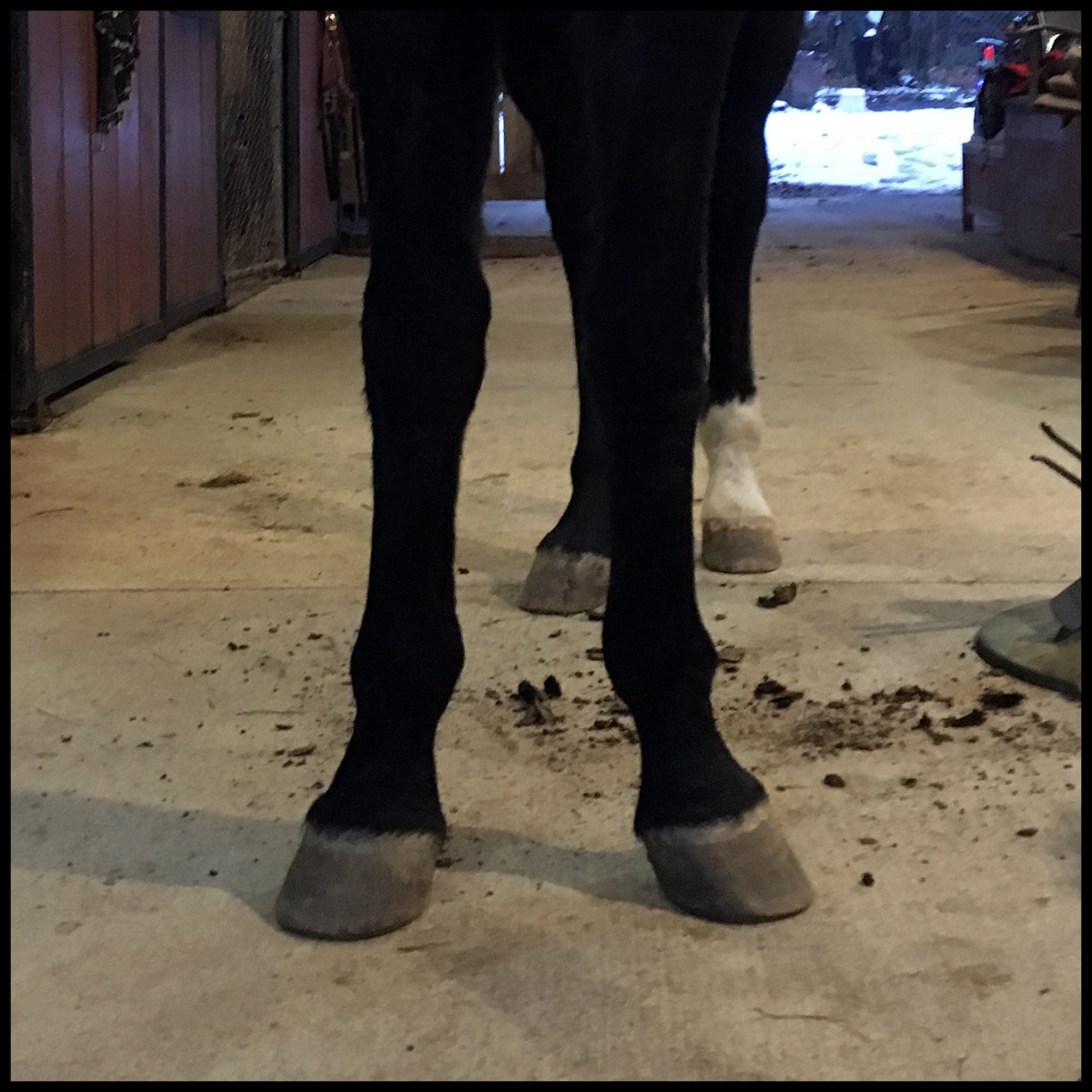
Horse with profoundly – but naturally – turned-out forelegs. Note that the carpus (“knee”), fetlock, and toe of each foreleg all point in the same direction.

…and a rear view of the left foreleg. Although some would consider this foot properly balanced because the heel buttresses and toe define a plane reasonably perpendicular to a vertical plane passing through the central sulcus of the frog, the hairline (among other things) indicates that the entire lateral side of the hoof is, in reality, (still) a bit longer/higher than the medial side. A work in progress, with some distance yet to go…
If the hoof had continued to be improperly trimmed, the hairline on the longer-heel side of the foot would have continued to be shoved upward. Imagine facing the horse and wrapping your hands around each side of the hoof – fingers on the bottom, with your palms against the sides of the hoof wall – and twisting in a vertical direction; that’s exactly what has happened! Yet, because many hoof care providers are taught that a foot is in balance if the bottom of the heel buttresses describe a plane 90° to the so-called “median plane” – a vertical plane passing through the apex of the frog and continuing through the central sulcus of the frog (i.e. through the “middle” of the foot – see the plane shown in “The Plane of Movement” graphic above) – they fail to recognize this form of imbalance.
To help check M-L balance, I’ve developed a simple tool that will allow both horse owners and hoof care providers to easily determine if a horse’s hoof has been properly trimmed. As shown in the photographs below, this Heel Balance Gauge can be used in two different manners to determine whether or not the heel buttress height is equal.
Eliminating M-L hoof imbalances can be challenging – not because of the actual trimming involved, but because many hoof care providers are simply unaware they’re not properly balancing the hoof, and the ones that are deliberately unbalancing the hoof are usually convinced they’re doing the right thing! So while it may be possible to explain to your hoof care provider that you want your horse’s feet to be in balance, it may ultimately be necessary to change hoof care providers to actually accomplish that objective. But your horse will thank you for it – by performing better and by staying healthier for a longer time!
“No one ever suggests we use some sort of tire to fix a crooked truck axle. Why would anyone suggest we use some sort of horseshoe to fix a crooked horse limb?” – Steve Hebrock

